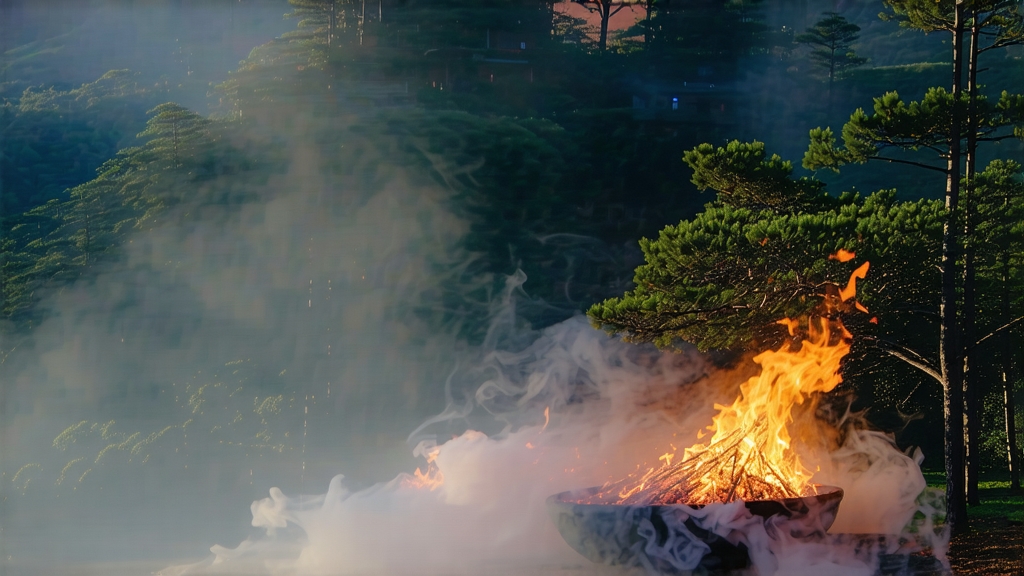
Lapsang Souchong—often written as Zheng Shan Xiao Zhong on Chinese labels—is the tea that started the global love affair with black tea. Four centuries before English breakfast blends and Assam CTC filled supermarket shelves, this small-leaf, pine-smoked wonder from the granite gorges of the Wuyi massif was already traveling along the Tea Road to Moscow, London and Amsterdam. To understand it is to hold a living fossil of both Chinese craft and world trade.
-
A history written in smoke
The accepted chronology begins around 1568, late in the Ming dynasty, when a passing army requisitioned the tea factories of Tongmu village. To dry the leaves quickly before the soldiers returned, workers spread them over pine fires. The accidental smoke infusion proved wildly popular with the Dutch merchants who received the first shipments in 1604; Europe had tasted nothing like it. Within fifty years “bohea” (the Min-bei pronunciation of Wuyi) became a generic English word for all black tea, and Lapsang Souchong was its aristocratic flagship. By the 1840s the same cultivars and techniques were transplanted to the Indian Himalaya, giving birth to Darjeeling and, later, to Ceylon tea. In short, every modern black tea traces part of its pedigree to this smoky forebear. -
Terroir: one canyon, two rivers, three micro-climates
Authentic Lapsang Souchong can only come from the 600–1,200 m core zone inside the Wuyi National Nature Reserve, Fujian. Here the Danxia sandstone cliffs funnel cool mist from the Chongyang and Tongmu streams, creating 80 % humidity year-round and a temperature swing of 10 °C between day and night. The soil is a thin, acidic laterite rich in quartz and manganese—minerals that translate into the tea’s tell-tale cocoa note. Outside this 48 km² enclave the same cultivar (a small-leaf Camellia sinensis var. sinensis locally called “cai cha”) produces a pleasant black tea, but it may not legally carry the designation “Zheng Shan” (original mountain). -
Cultivar and plucking standard
Only three clones are permitted: Xingcun Xiaoye, Wuyi Caicha and the newly selected Wuyi #8. Picking occurs once a year, between Qingming and Grain Rain (early to mid-April), when the leaves reach the “one bud, three leaves” stage. The bud’s downy tip is essential; it absorbs smoke volatiles more readily than older foliage and supplies amino acids that soften the finish. -
Orthodox craft: withering over pine embers
The process follows five meticulous steps that have changed little since the Ming era.
a. Outdoor withering: trays of leaves are laid on bamboo racks in the shade of the canyon for 3–4 h, reducing moisture to 65 %.
b. Indoor withering: they are moved into the loft of the factory where a gentle pine fire (28–30 °C) circulates beneath slatted floors for 6–8 h; the leaves lose another 10 % water while absorbing resinous aroma.
c. Rolling: 45 min of light pressure in a cast-iron roller breaks cell walls without shredding the leaf, ensuring an even release of polyphenols during oxidation.
d. Oxidation: rolled leaves rest in wooden troughs 2–3 h at 24 °C and 85 % humidity, turning from jade to copper to dark mahogany.
e. Smoking & drying: the decisive step. Workers spread the oxidized leaves 2 cm thick on screens suspended 70 cm above a pinewood ember fire (no flames). Fresh pine and cypress logs are added every 20 min; the smoldering resin coats the leaf with guaiacol and syringol, molecules responsible for the signature pine, spice and dried-longan bouquet. After 45 min the moisture drops to 4–5 % and the tea is considered finished. A small “unsmoked” batch, called Wu-xun Xiao Zhong, is dried with hot air alone for markets that prefer a sweeter, fruit-forward cup. -
Grades and style variations
- Zheng Shan Xiao Zhong (original mountain, pine-smoked): long, slender, jet-black leaves, golden tips, aroma of pine sap, burnt caramel and lychee stone.
- Wu-xun Xiao Zhong (unsmoked): same leaf